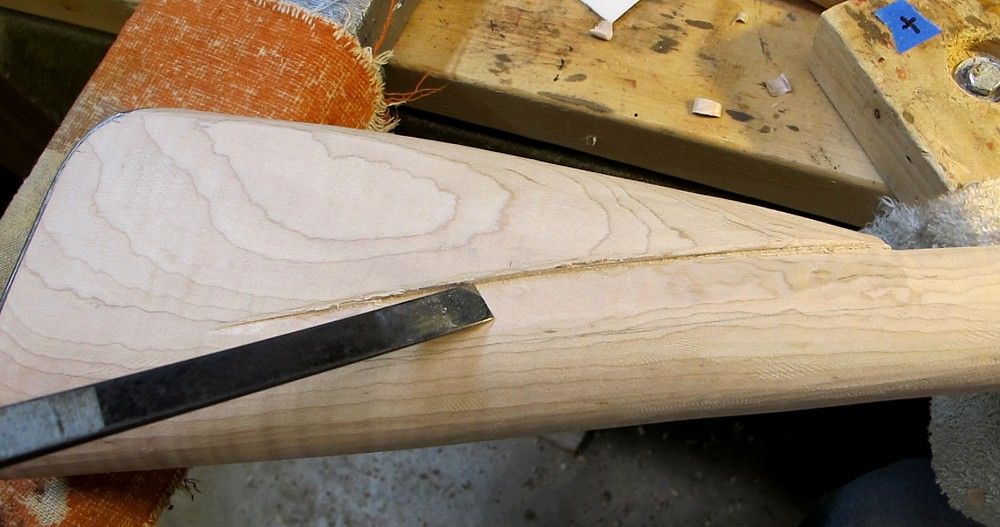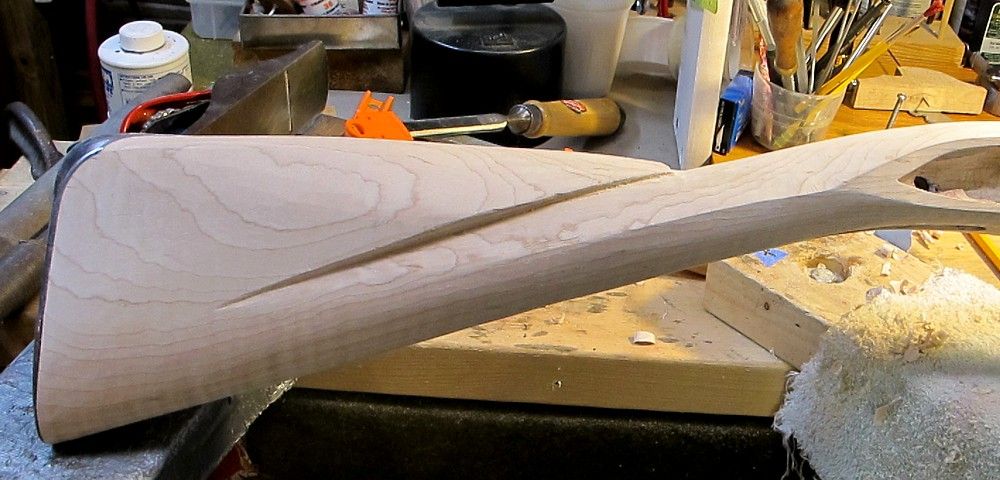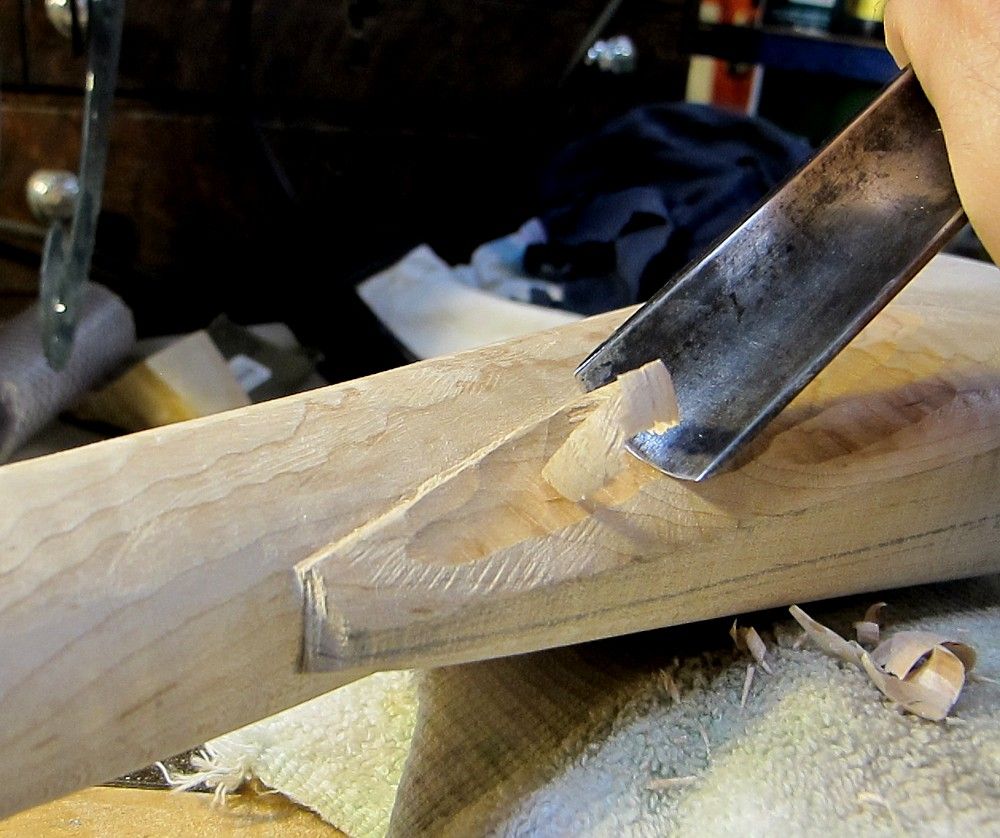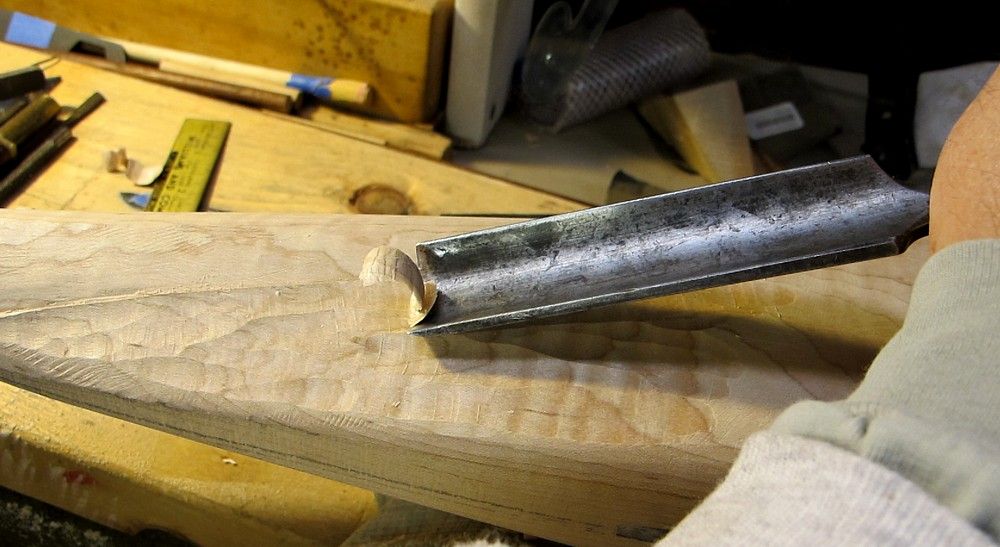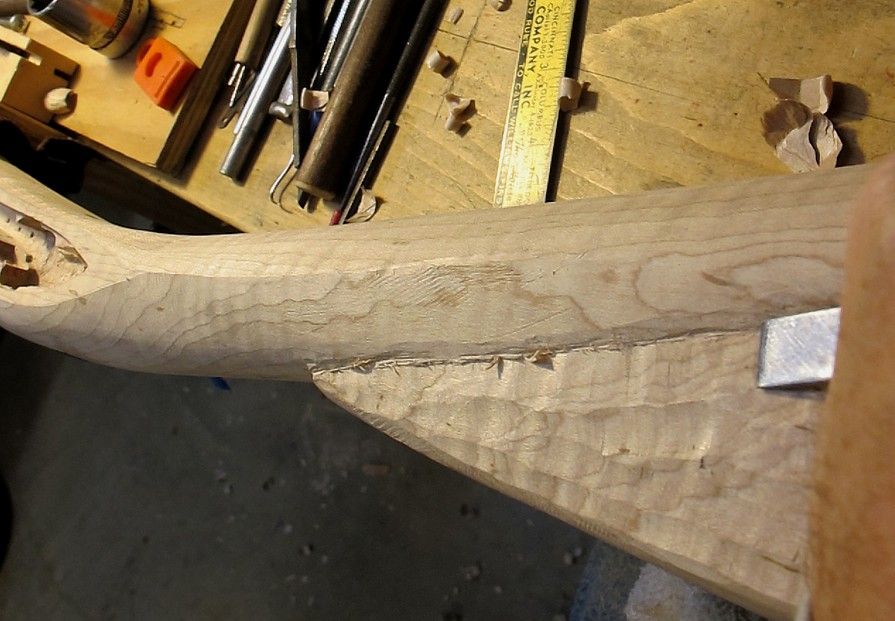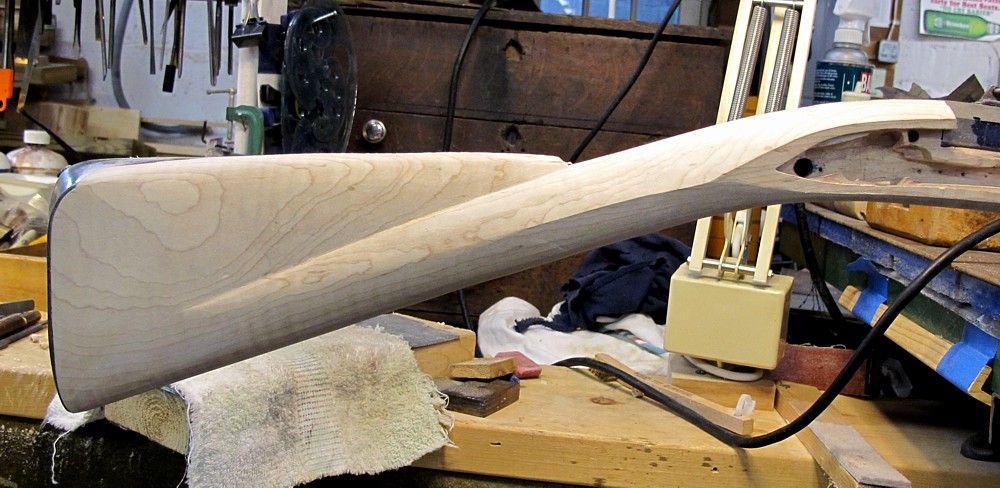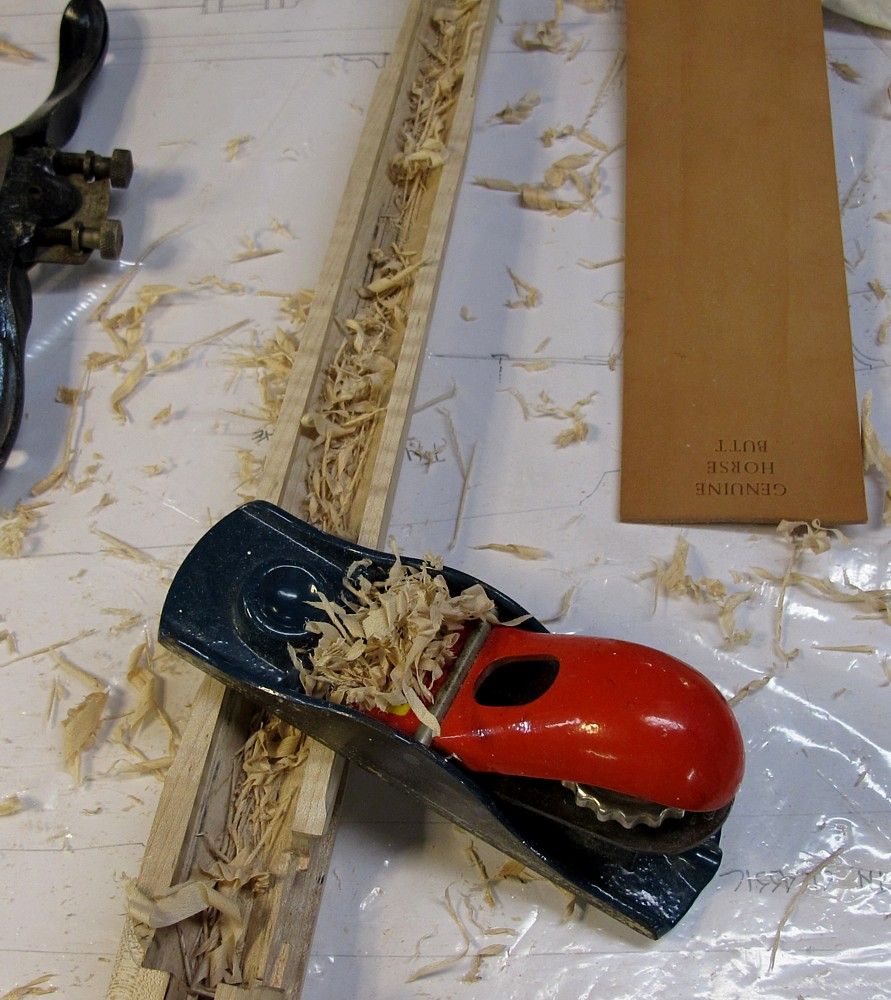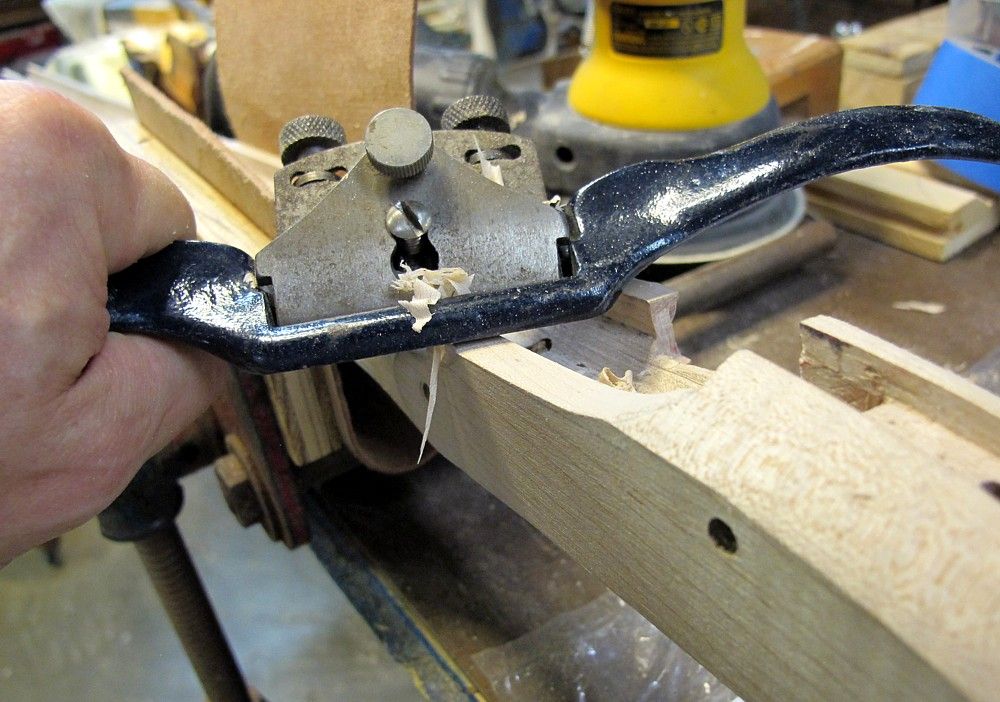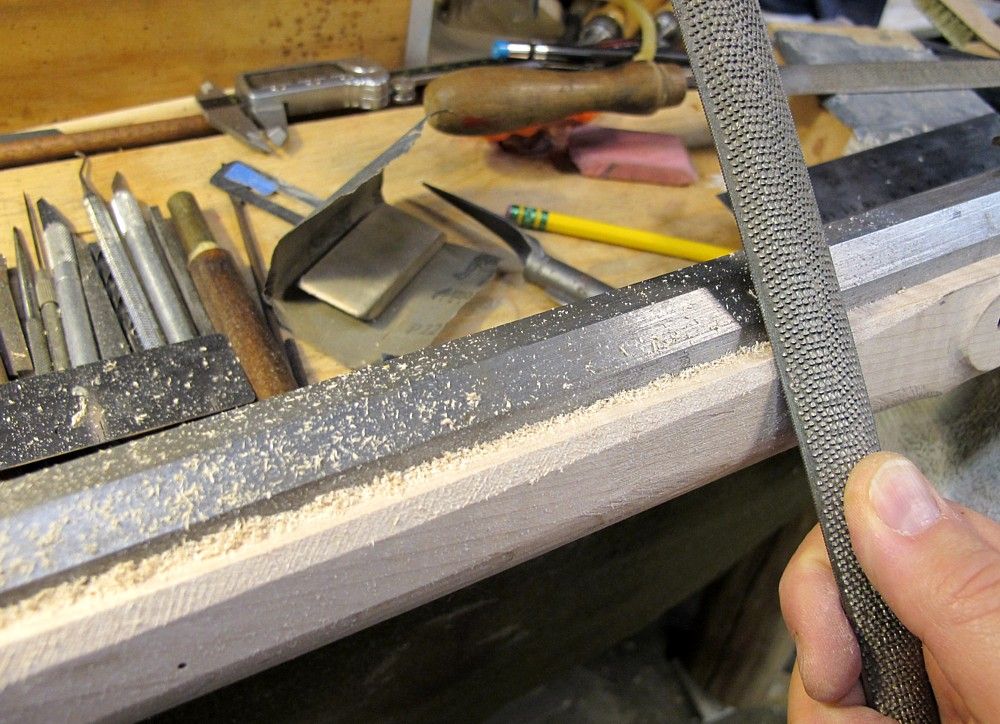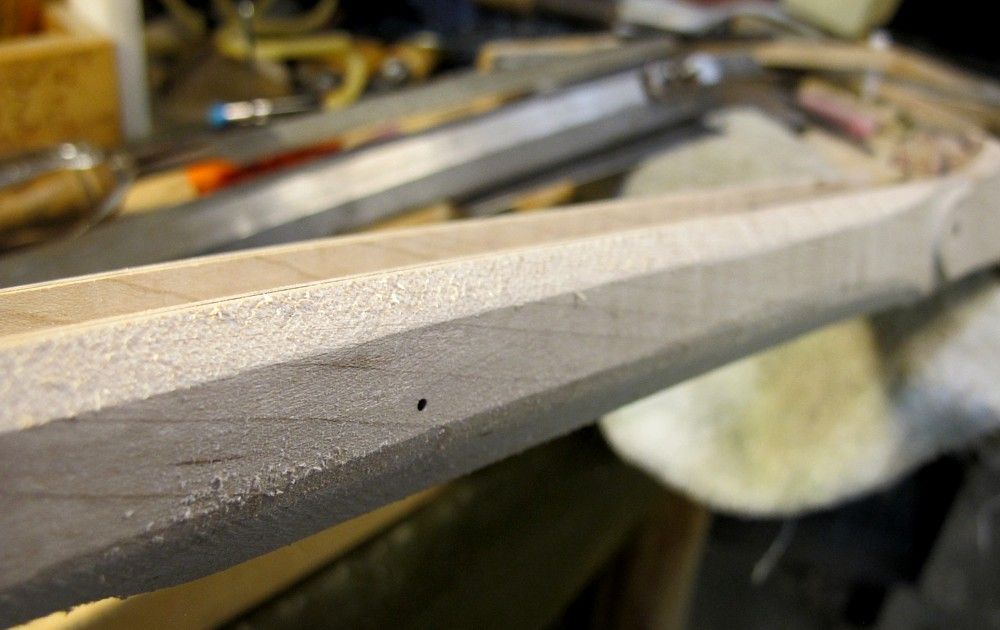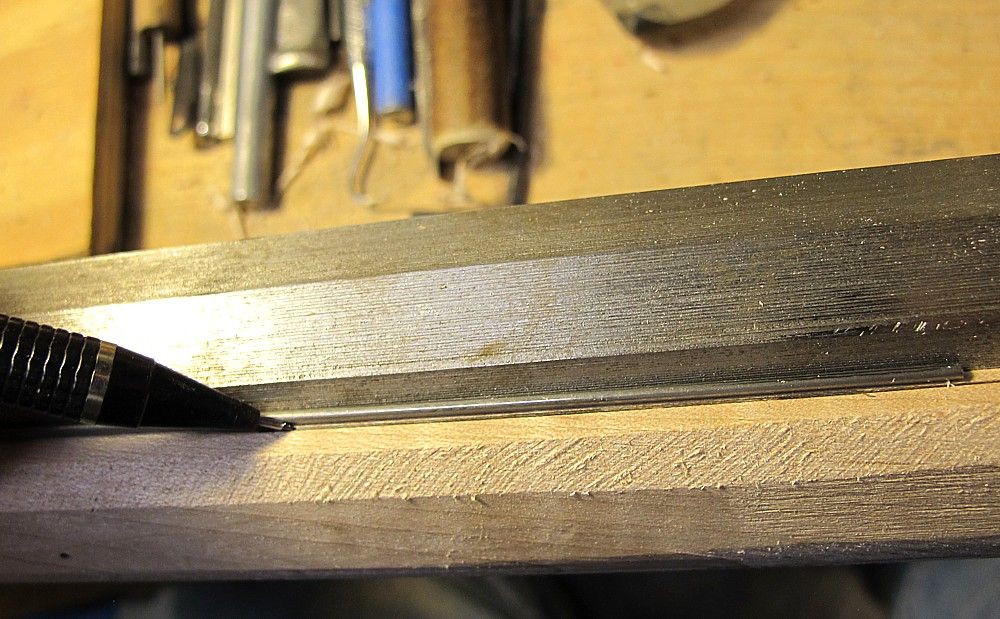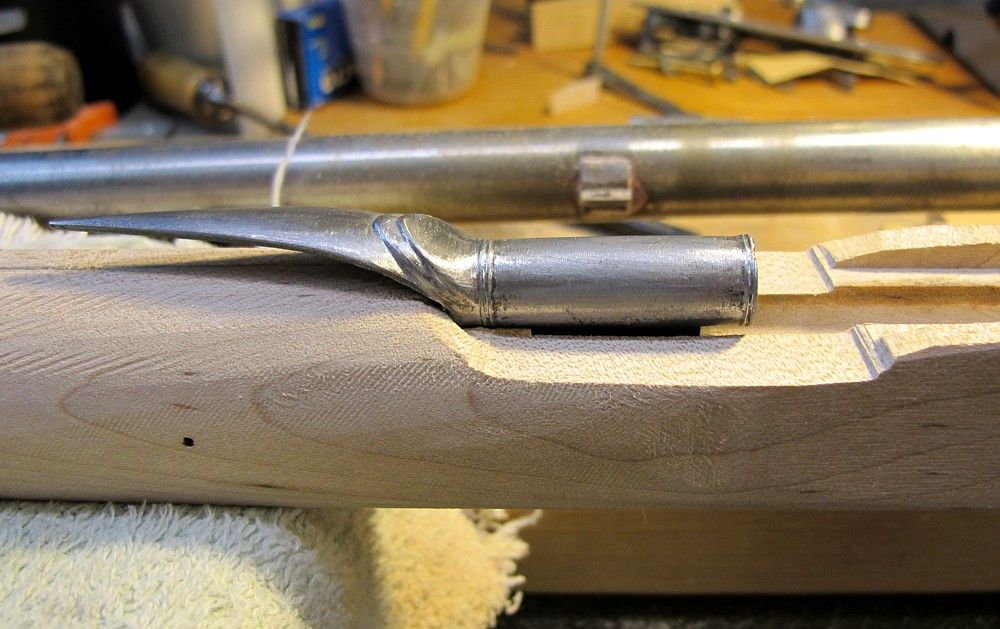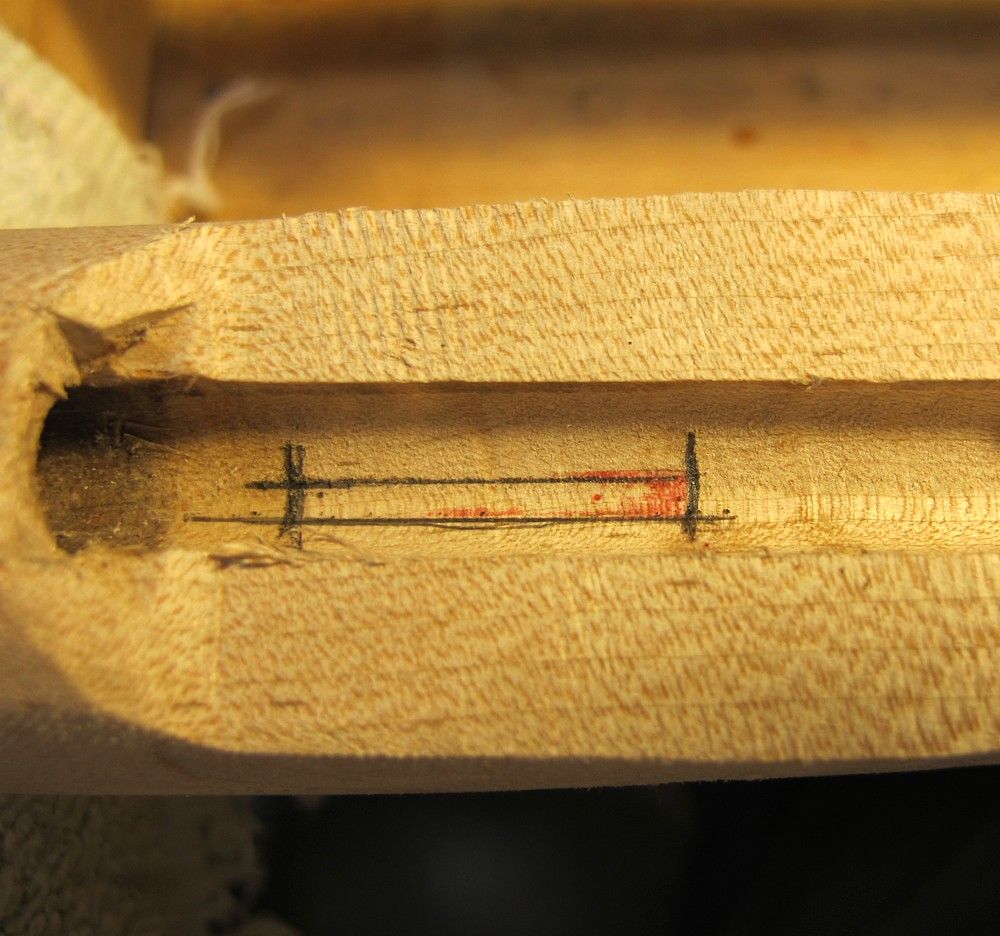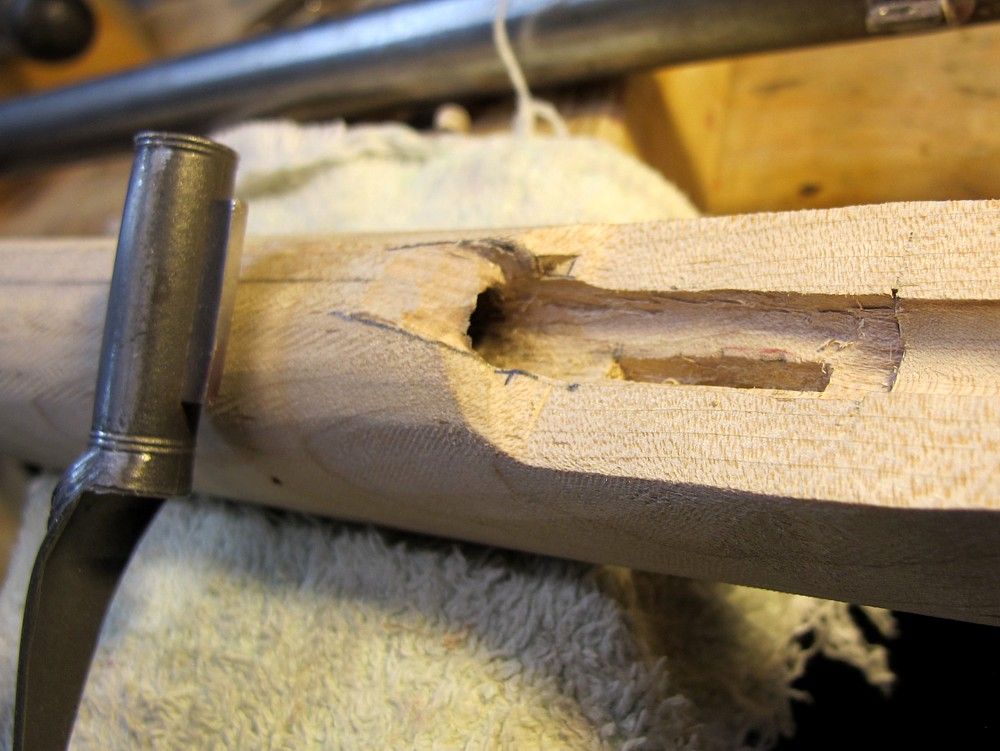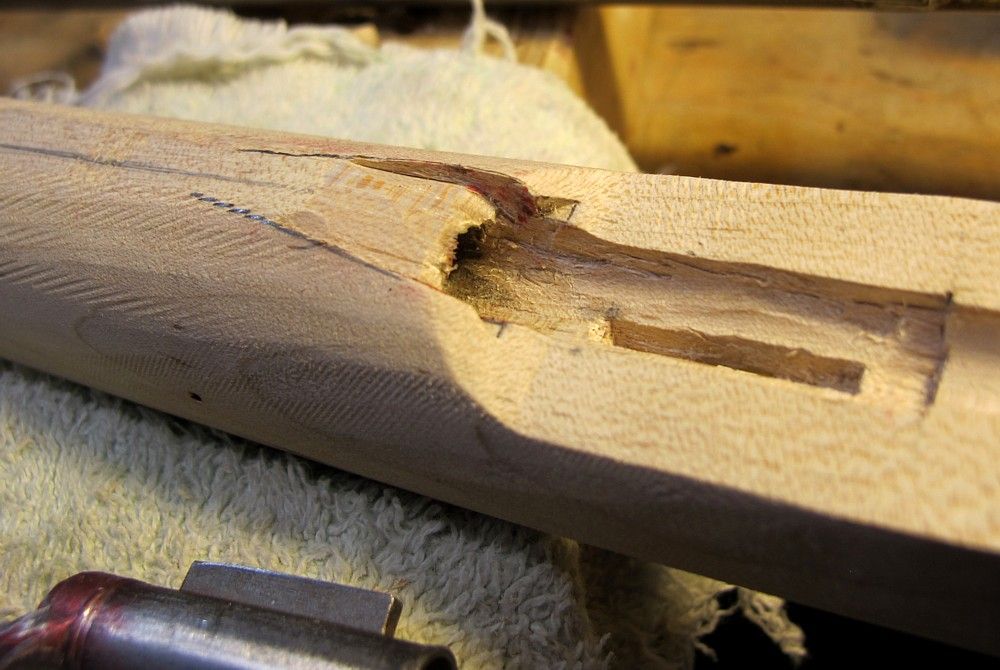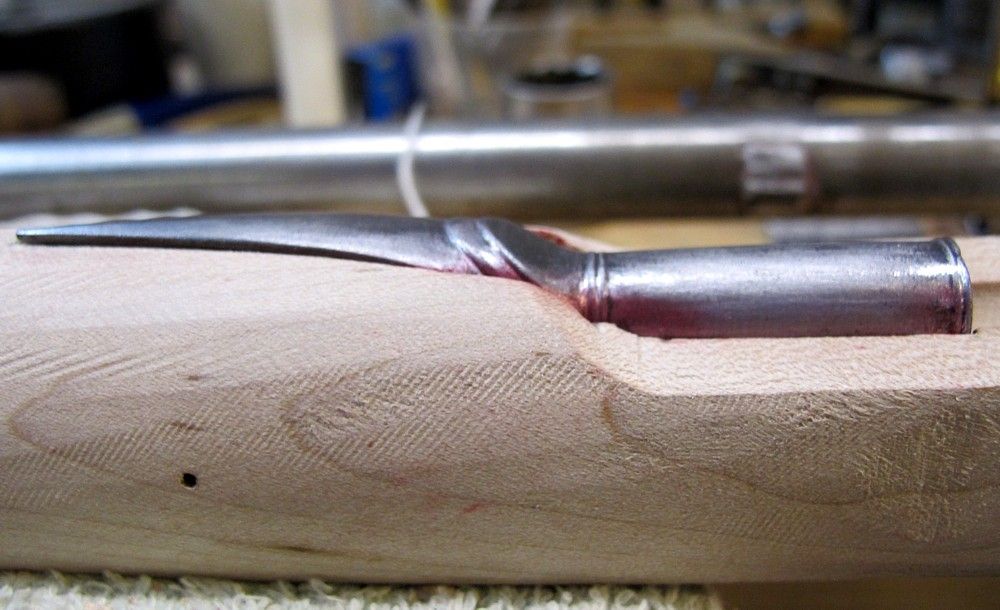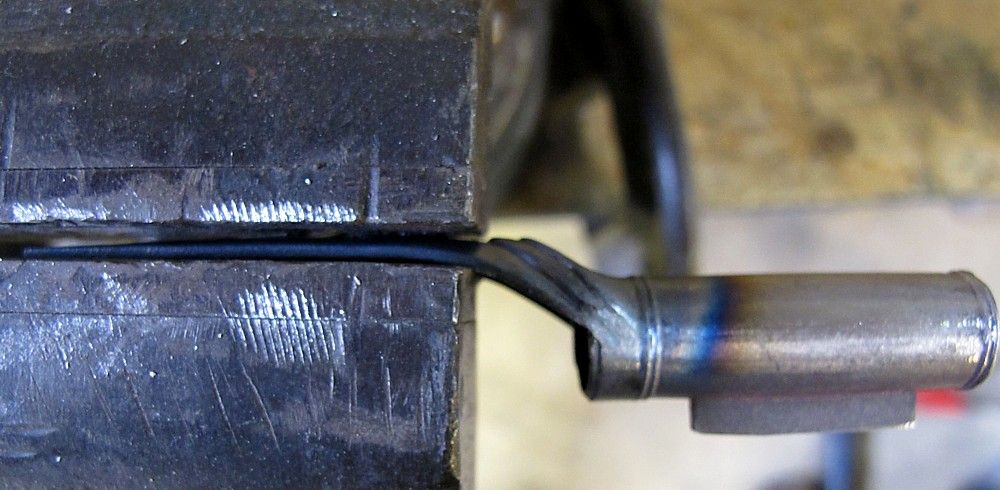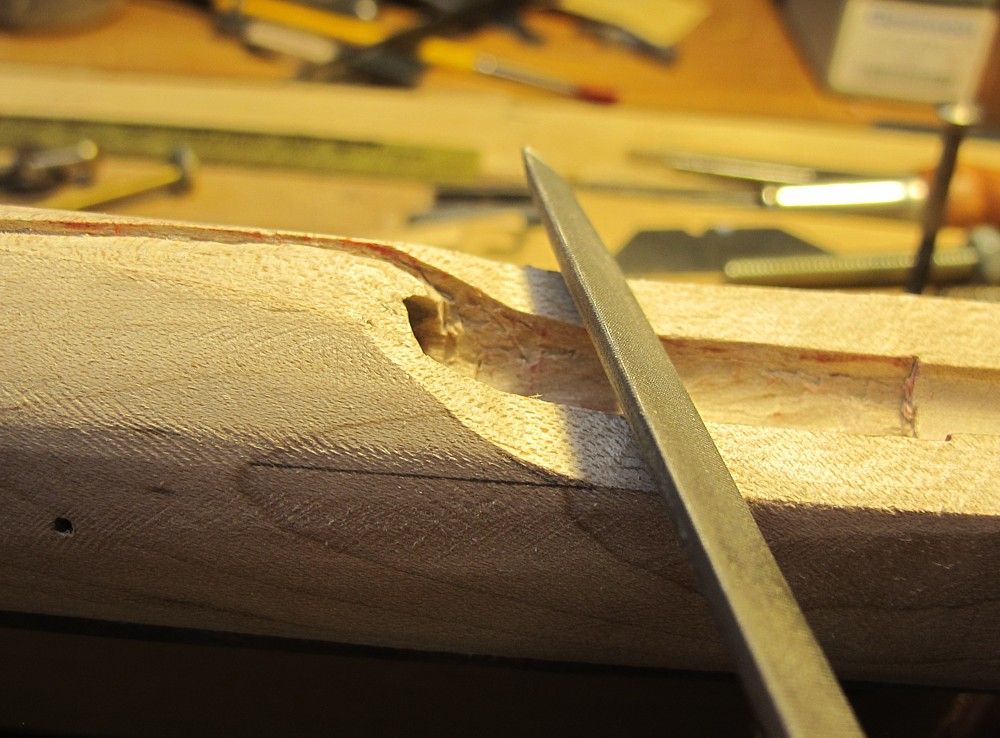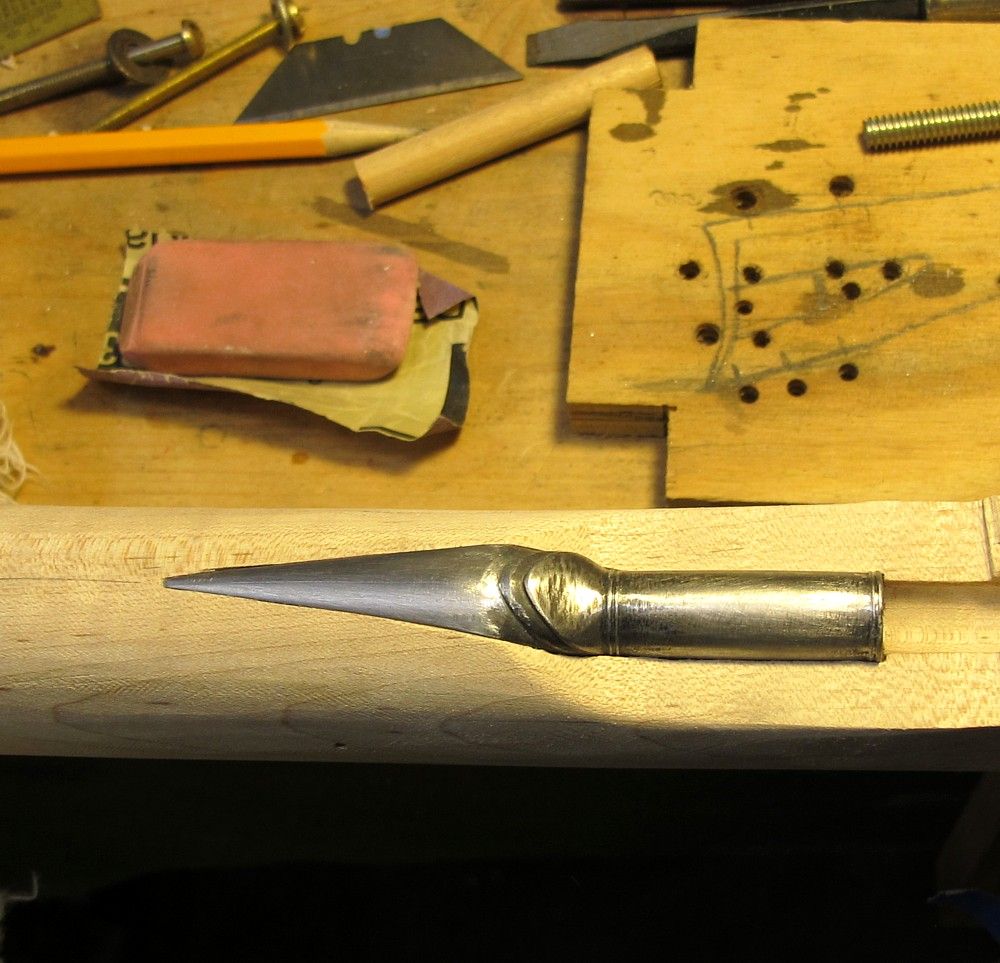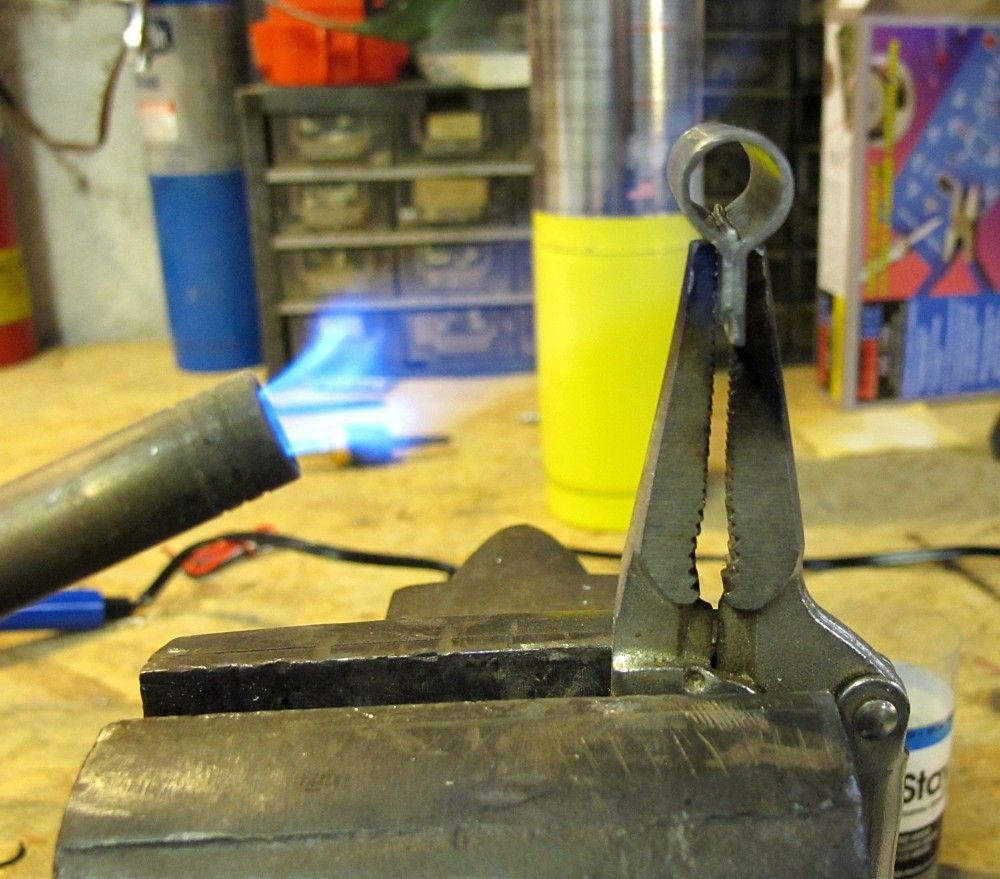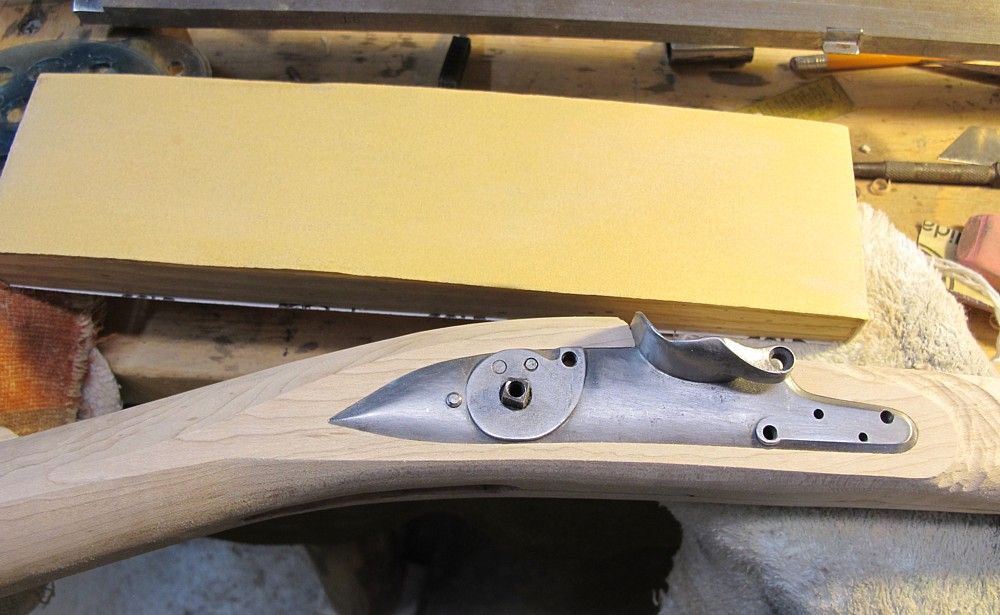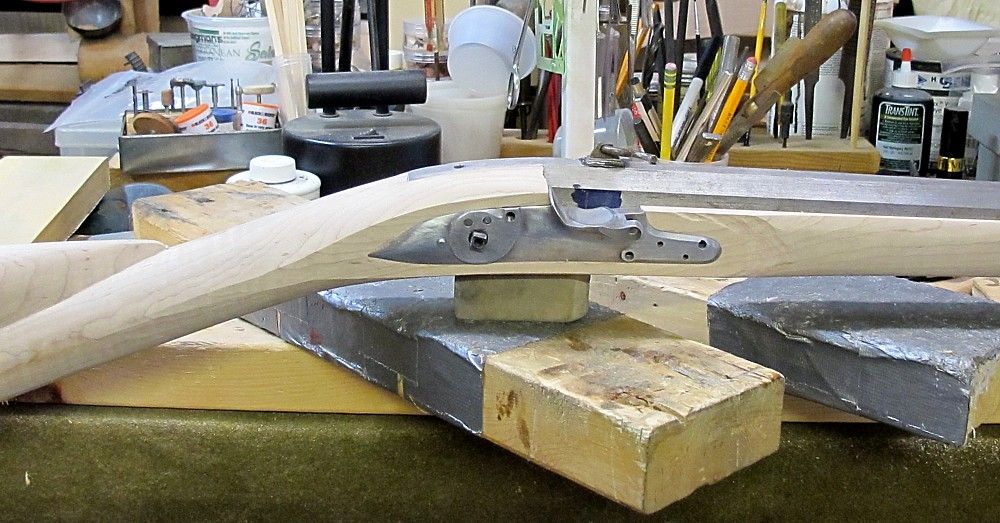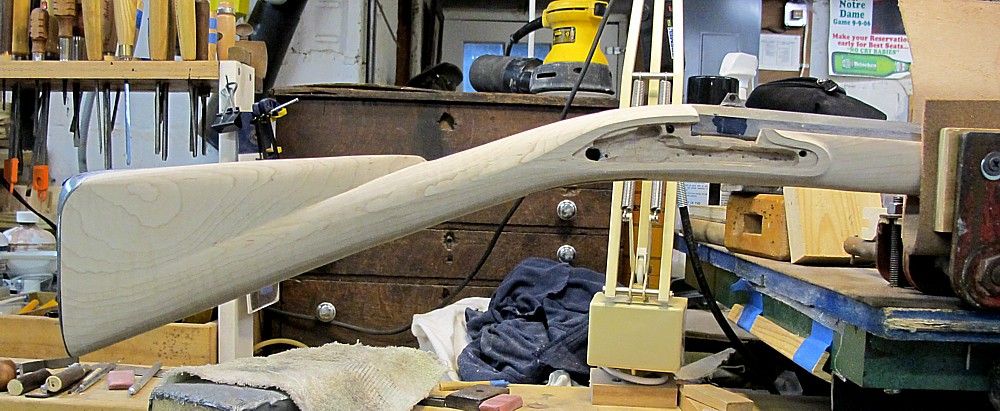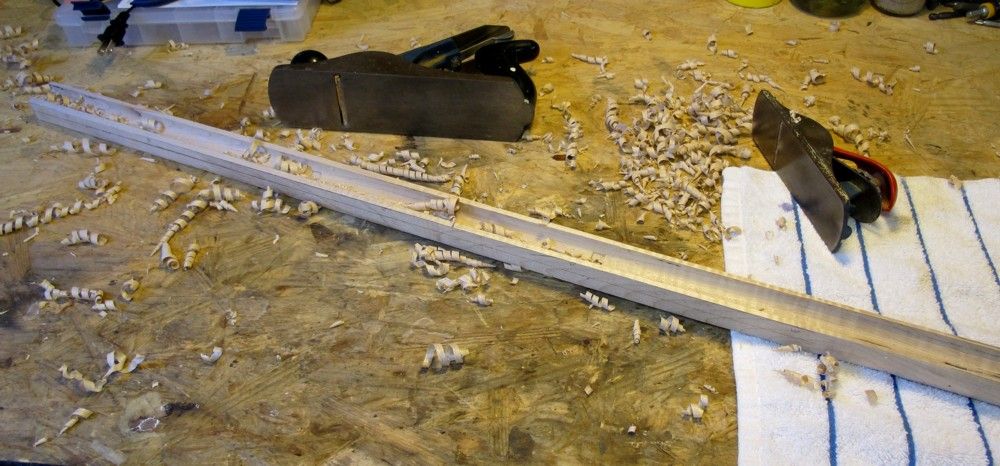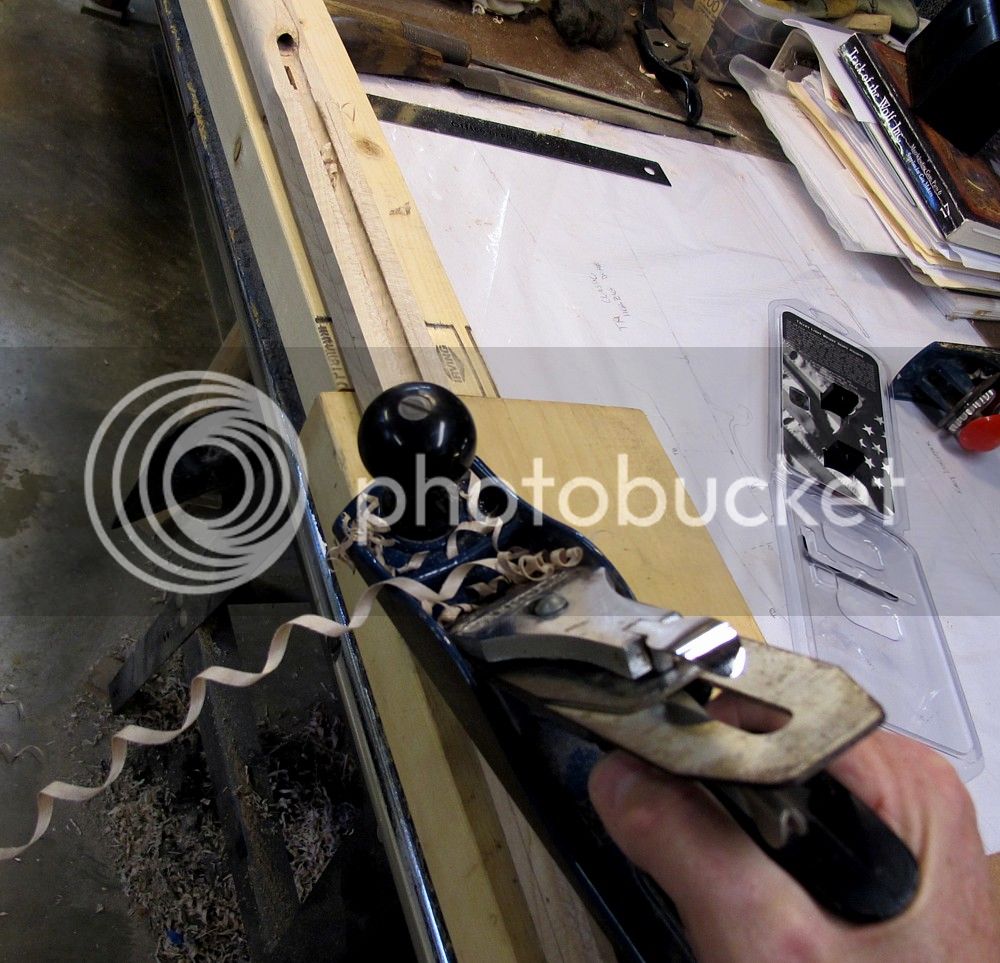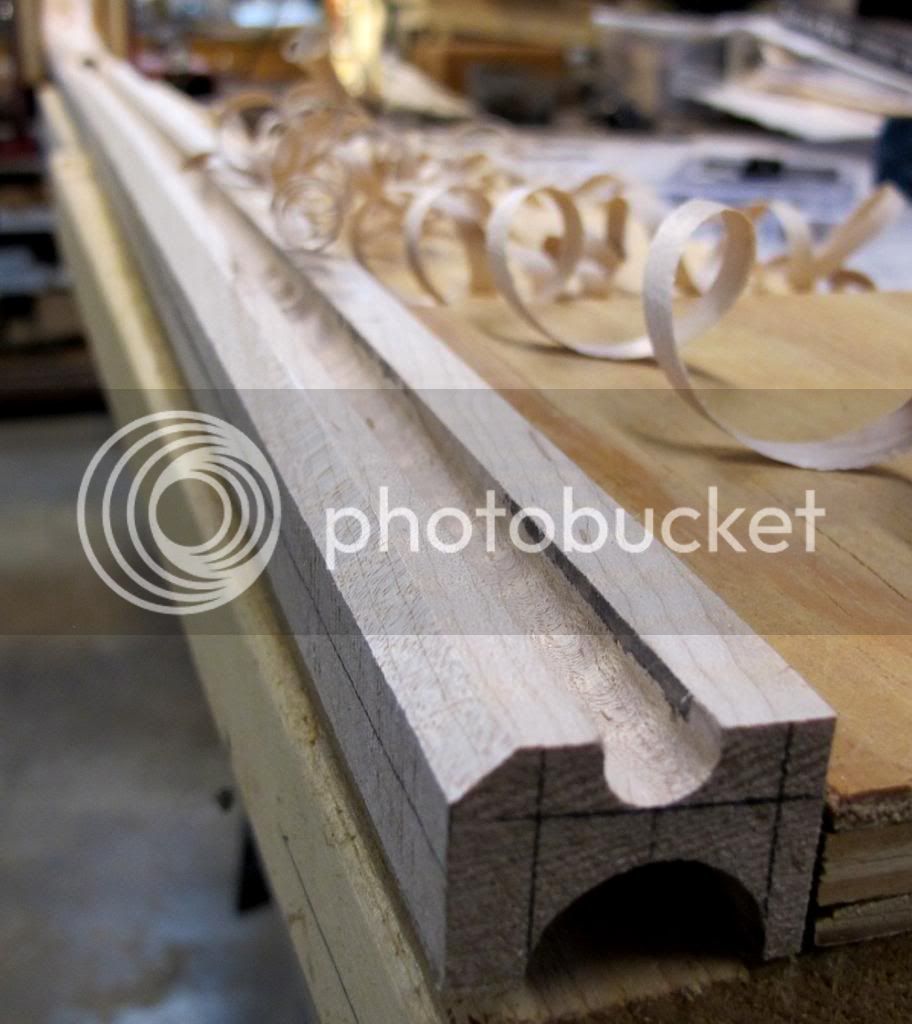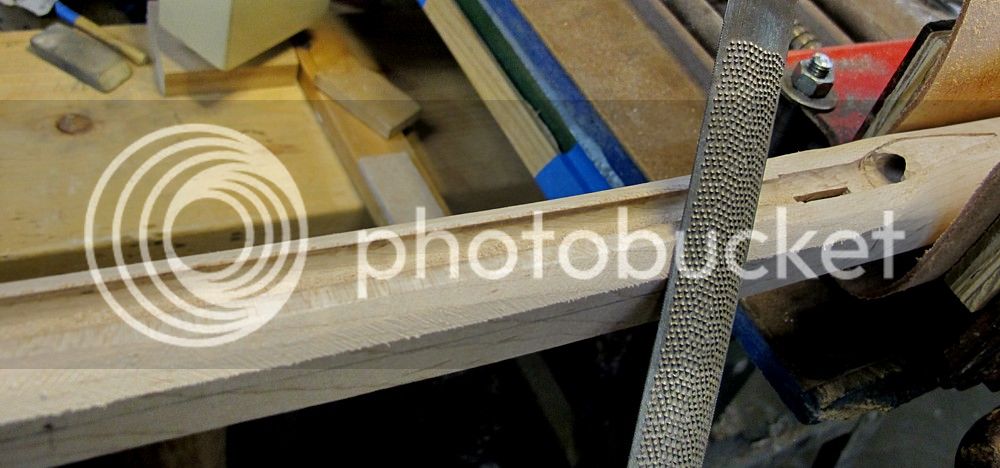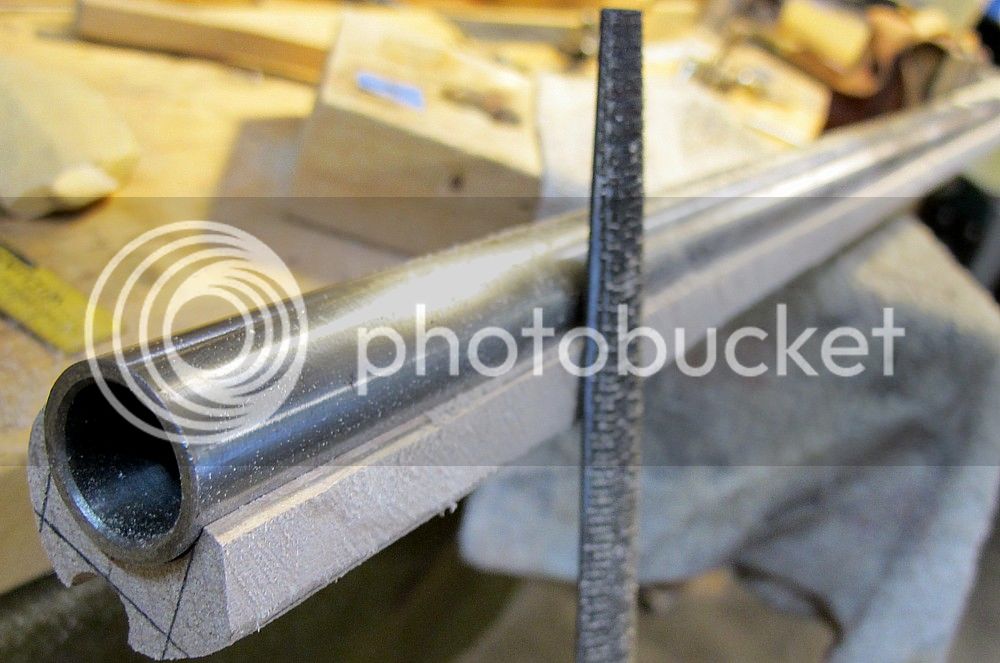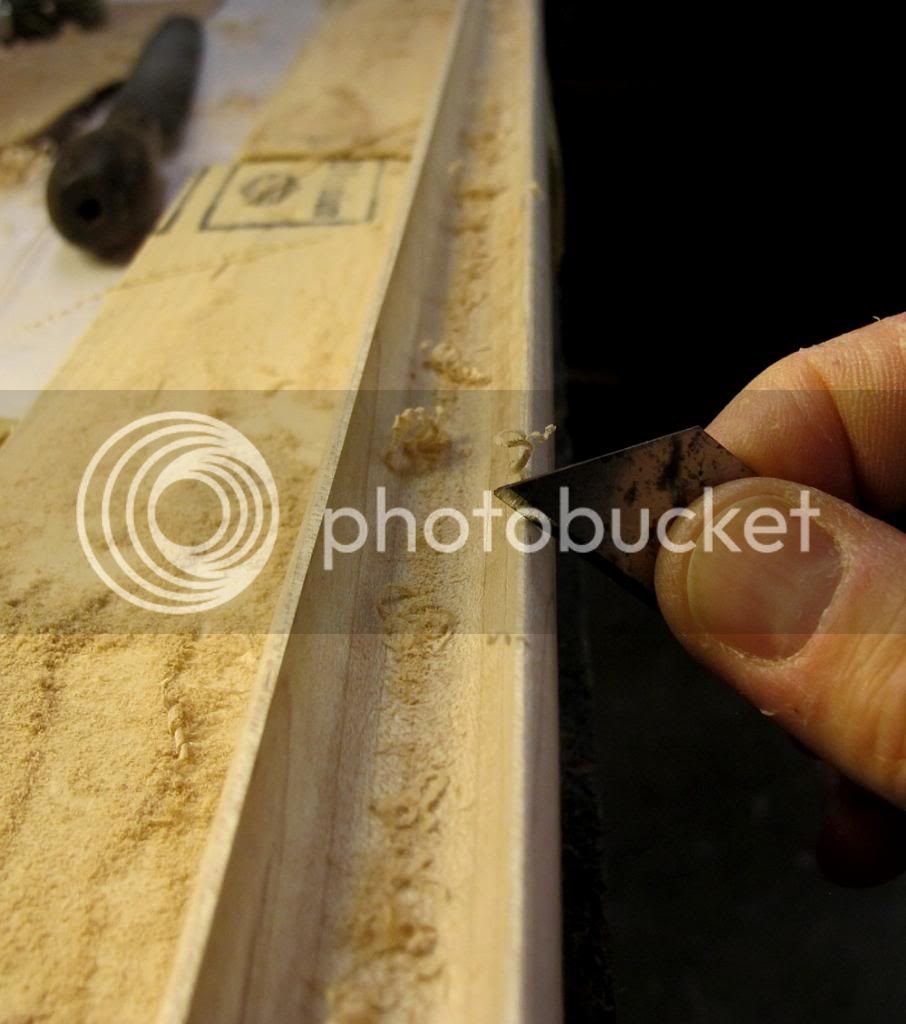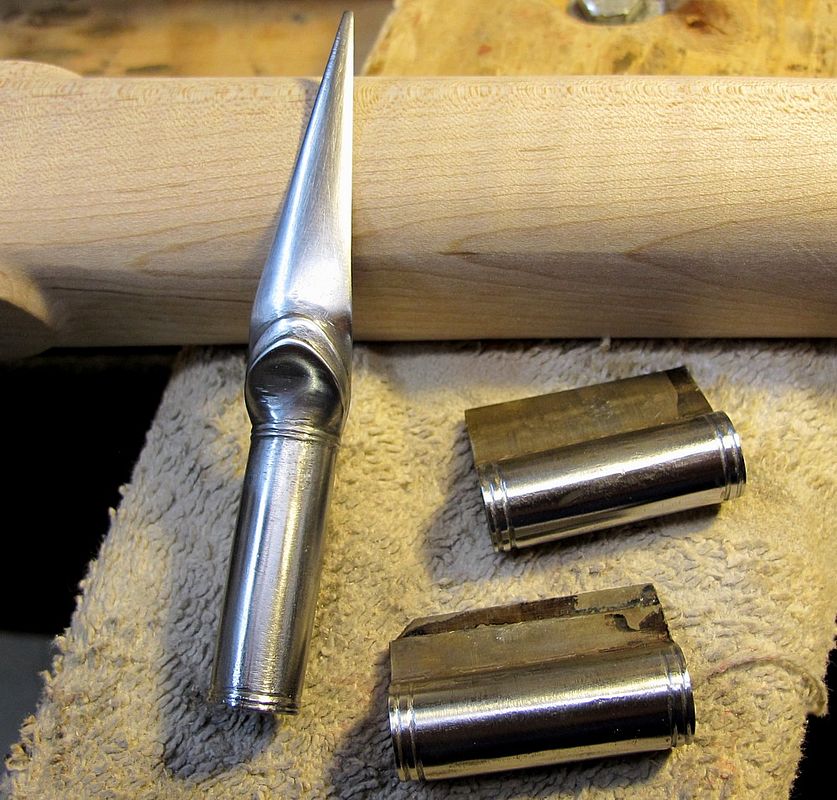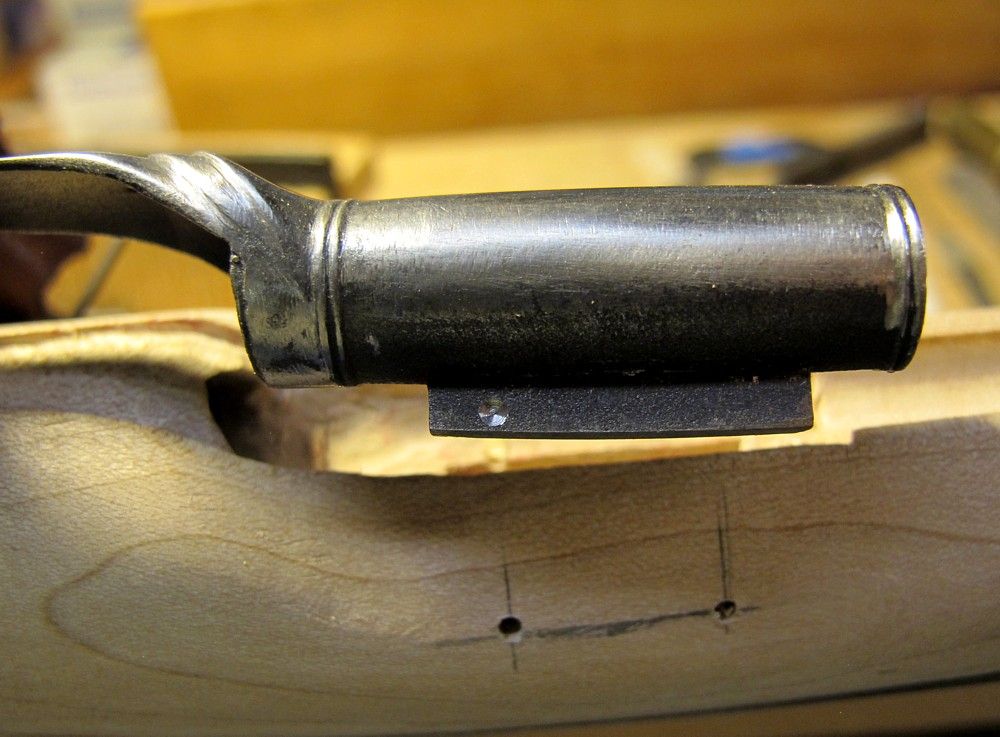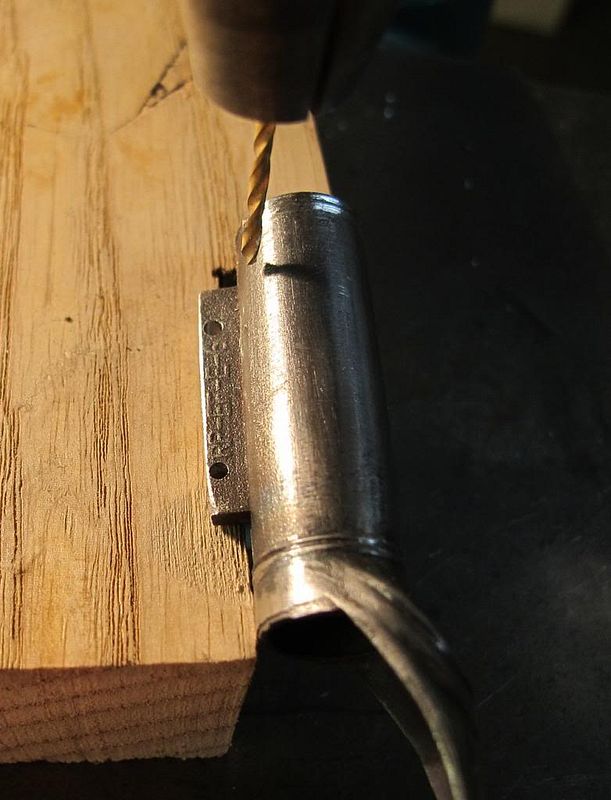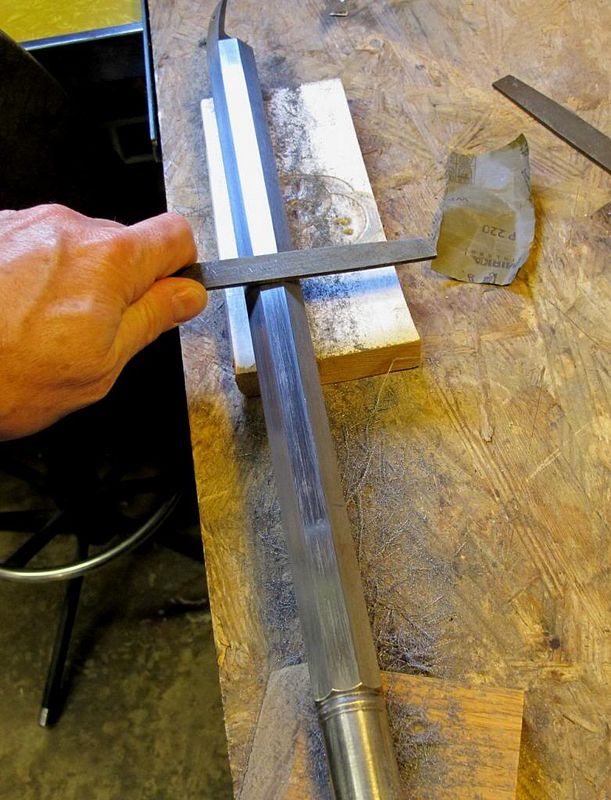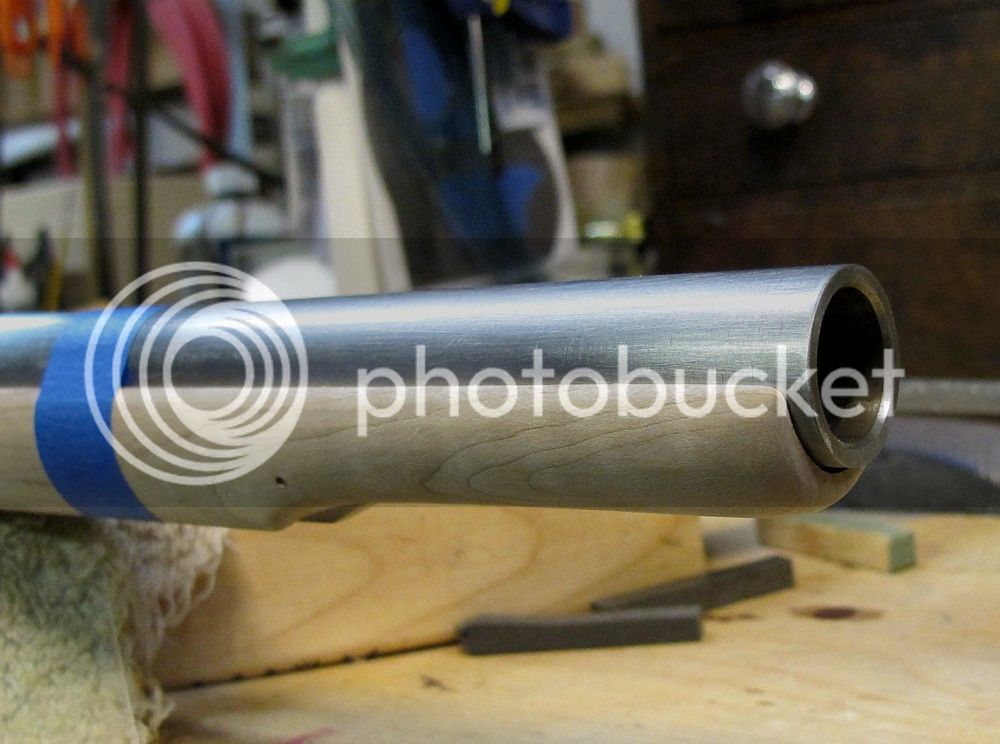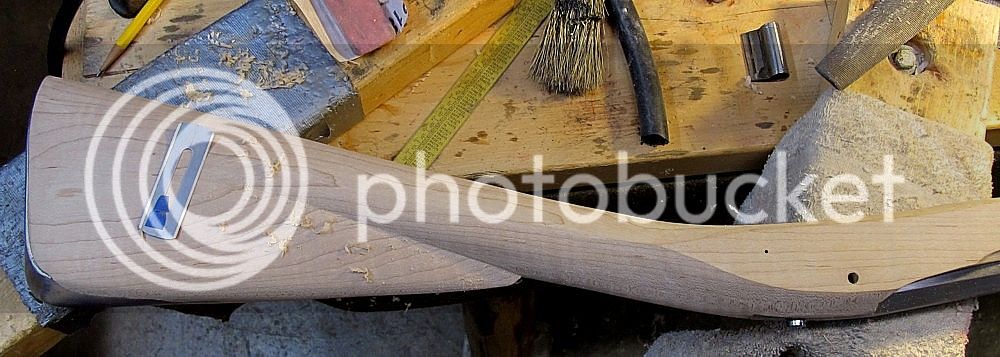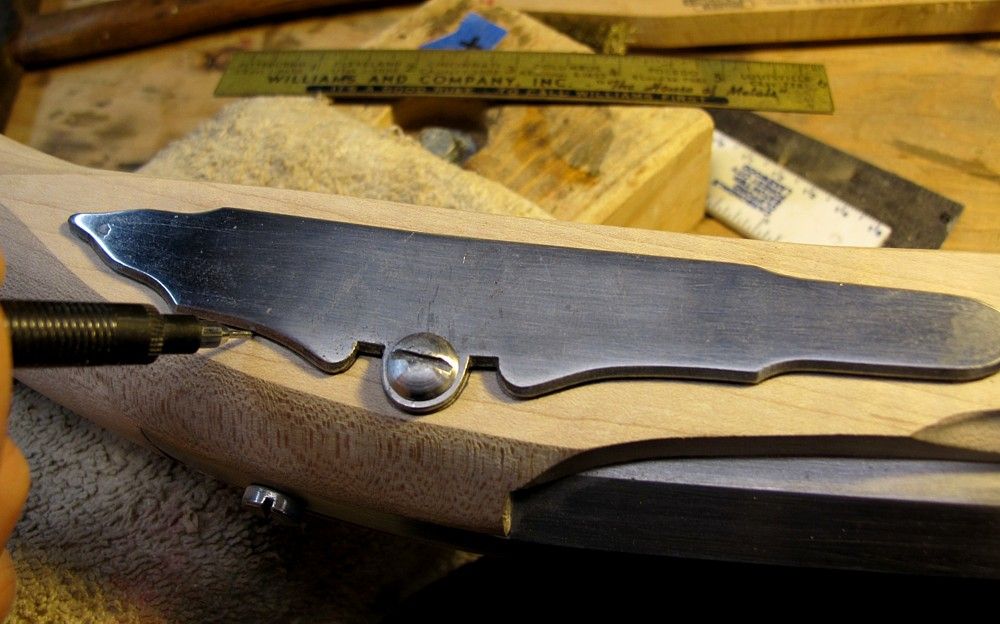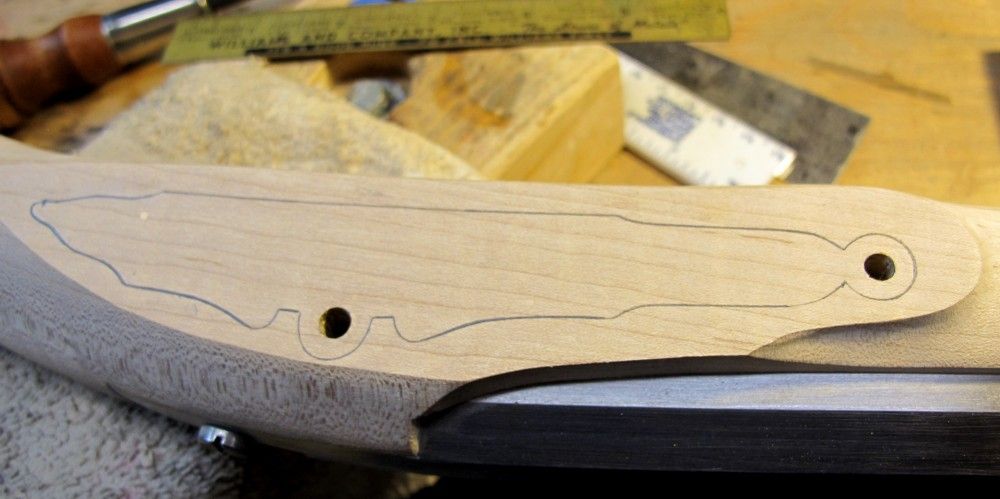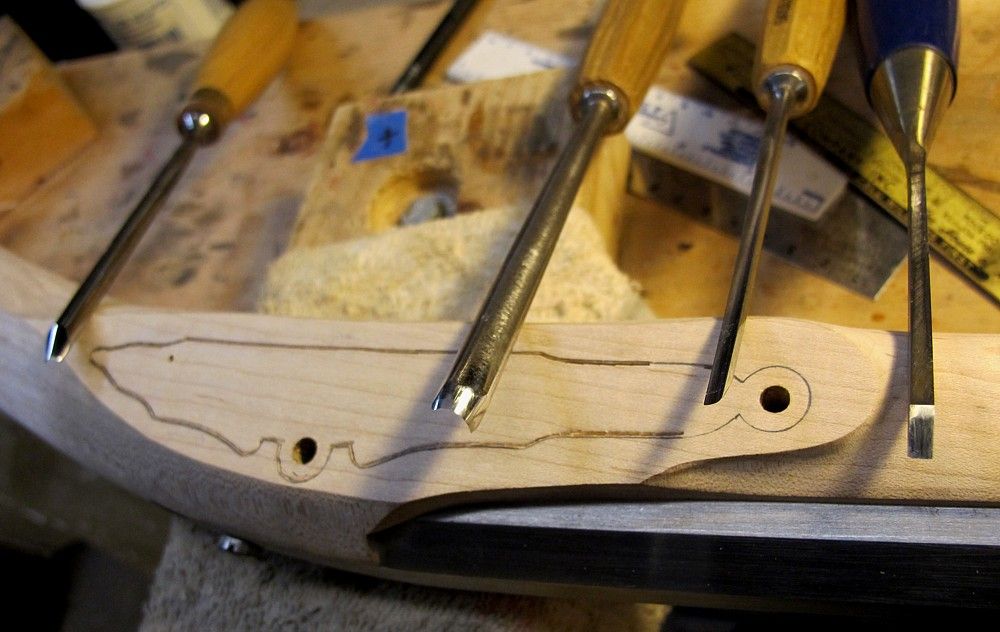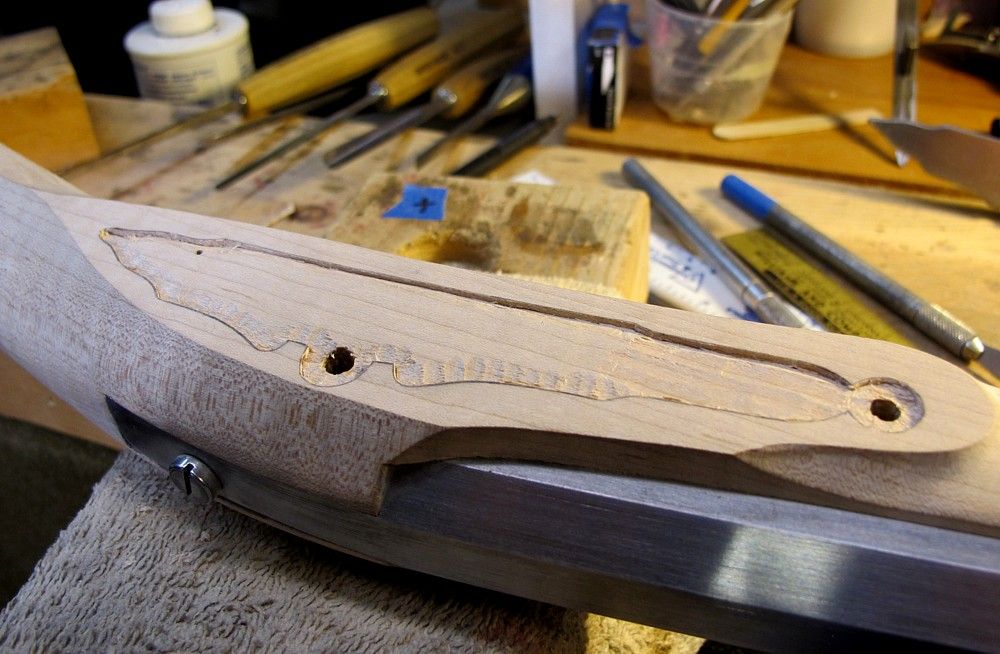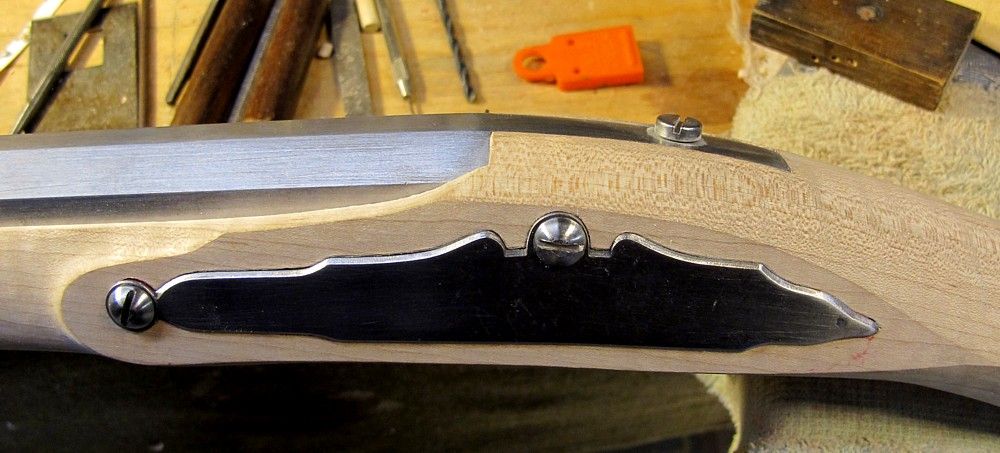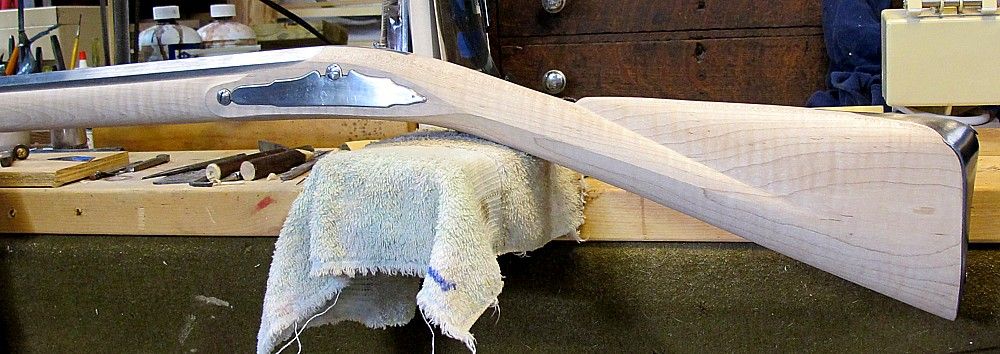Made a little progress in the last week, but not much.
Life, wife, and kids took precedence.
Wanted to rough out the lower forearm before inletting entry pipe, so as not to have to go through too much extra wood.
Turns out I barely had enough wood as it was.
On the forearm, I took the top line down to near final level (half the barrel exposed) with block plane.
Near the breech, where it curves up, I used spokeshave and scraper.
Then worked down the forearm from the sides in, using the faceted approach described in Mike Brooks’ tutorial.
(Note: Santa brought me a horse butt strop! Everybody oughta have one of those. I have yet to give it a work out, but i will soon.)
To make a lay-out line for how much wood to leave on the top of the lower forearm I just laid a piece of 1/16” music wire along the barrel and traced along side it.
Then on to the entry pipe. Despite my early whining, turns out I DID have the entry pipe from TOW, it’s the forward pipes I've been waiting on.
(And I appreciate the gracious offers I received from some forum members here help me out of that predicament ”“ thanks fellas.)
Simple forward pipes I can make, and so I did.
For the entry pipe, I took off a small patch of excess wood from the bottom side, again, so I’m only inletting through the minimum ”“ I left the rest to keep some rigidity to the upper forearm.
I did leave excess around the shoulder, or transition from upper to lower forearm ”“ I’ll trim that up once the pipe is home.
So in the photo above ”“ I had a small problem.
I was down as deep I needed to be for ramrod travel, but the pipe skirt was still not all the way in the wood.
Too much hump and curvature, so I propaned it red hot and squeezed it in vise to flatten it out a bit.
Worked the stock transition back a little with a small half-round file, a little more inletting, and the pipe was about how I wanted it.
Some fine tuning of the stock and pipe clean-up will occur later.
Formed the forward pipes around some 3/8” round bar, and soldered together the tabs.
Pic (below) is off StayBrite solder wire laying inside the pipe, on the seam (which was cleaned & fluxed).
Some gentle heat until it melts down into the tabs. Easy as it gets.
Will file the ring detail into the pipe ends later.
Next I took down the lock panel to final grade. I used a homemade 8” sanding block for this, you can see in the pic. 100 grit on one side, 220 on the other. Kept everything level.
Of course, lowering the panel distorted my lock panel outline (pic below) ”“ made everything bigger and the flats extended forward and backward ”“ so later I had to essentially re-do the entire lock panel shape. Kinda inefficient.
So after reworking the lock panel, and more wood removal around all sides of the lock, I’m getting closer to the final shape in that area. But surely more tweaking and slimming before it’s over.
Wrist needs significant weight loss as well as the bottom of forearm, once the TG goes in.
See where they discovered that a Revolutionary War cannon in NYC’s Central Park Conservancy was still loaded with powder and ball ? There’s a safety lesson there somewhere.
/MM


